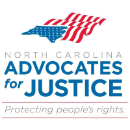May Is Motorcycle Safety Awareness Month
May is Motorcycle Safety Awareness Month and we are all reminded to be aware of the unique issues facing those who enjoy riding motorcycles. With the beautiful weather, and free time many of us have on our hands, riders are starting to get out more on their bikes. Most bikers have undergone courses in safely operating their motorcycle, but it’s usually those operating cars and trucks that are the cause of wrecks. Motorcycles can be less visible than cars, so distracted car and truck drivers might not see a motorcycle when changing lanes, or pulling out from a stop sign.
According to the North Carolina Division of Motor Vehicles, “Motorcycles represent about two percent of all registered vehicles in North Carolina, but account for about ten percent of all fatalities on the state’s roads.” The National Highway Traffic Safety Administration notes on its website that while “the number of motorcyclists killed in crashes dropped to 4,985 in 2018, an almost five percent decrease…motorcycle riders are still over-represented in traffic fatalities.”
Most motorcyclists are vigilant, but need to assume that drivers of cars and trucks won’t be. Drivers may not be used to sharing the road with motorcycles after not seeing them out on the roads as much in the winter months. Remember when riding your motorcycle to look twice and expect the unexpected. Don’t let less traffic on the road make paying attention to all vehicles on the road, as well as pedestrians, less important.
The NCDMV encourages all motorcyclists to be properly licensed, take a motorcycle safety course, wear brightly colored clothing and proper protective gear, obey speed limits and all traffic laws using hand and turn signals at every lane change, and NEVER ride distracted or impaired. All drivers are encouraged to share the road, stay alert, always signal your intentions, and keep a safe distance from one another.
There are ten motorcycle safety lessons we encourage all bikers to follow:
- Wear A Helmet
When you ride a bicycle, I bet you wear a helmet. It is the law in North Carolina. A helmet is even more important on a motorcycle when travelling at higher speeds, and surrounded by other vehicles. Helmets are absolutely proven to prevent brain damage and death from head trauma. It’s the law, and it’s the smart choice.
- Wear Sturdy Gloves
This one may seem unusual, but if you were to fall, the first thing most of us do if put out our hands. It’s a human reflex. If you fall over on your bike or come off at high speed, a pair of sturdy gloves will prevent or reduce hand trauma. Plus, some gloves are cool!
- Wear Proper Clothes And Boots
Like gloves, good footwear is critical, since you are sometimes putting your foot down on the pavement and use your feet for balance. The last thing you want is catching your flip flop in a turn, or worse, if you have to lay it down. A proper jacket and pair of pants can save you from a burn or a nasty case of road rash. In the event of a spill, proper riding leathers can provide the protection you need. Harley Davidson says the last thing you want to be when you hope on your bike is a SQUID (Stupid Quick Underdressed and Imminently Dead).
- Look Where You Intend To Go
In a vehicle, and more so on a bike, you tend to go in the direction you are looking. When you enter a corner, it’s important that you turn your head and look through the turn to where you want to go. There’s nothing like the sensation of entering a corner and all of a sudden realizing that you’re not turning, you’re just going straight toward the opposite lane of traffic. Then you realize you’re staring at a goofy-looking rock on the far side of the road and the light bulb goes off, you turn your head, look out at the exit of the curve, give a little lean and you’re in the clear.
- Don’t Apply Front Brakes First
When a dog runs out in front of you, or a car suddenly switches into your lane and it’s time to hit the brakes, never hit the front brakes first. Train your instincts to always apply the rear brake first. Brake first with your foot.
- Slow Down Before Curves; Accelerate After The Curve
Always accelerate and decelerate in a straight line, despite the temptation to accelerate coming out of a curve. Slow before you approach a curve, because applying the brakes in the middle of a curve can upset your weight distribution, cause a loss of traction and impact your control of your bike.
The faster you’re going, the more these effects are magnified. Go in too hot, grab the brakes in a panic and you’ll realize that you would have been much much happier if you had just downshifted and chilled a bit. Slow in, fast out — leave the speed for your way out.
- Watch Out For Road Debris
Motorcycles have less traction than four wheeled vehicles. Road debris, like sand, gravel, and other objects, create hazardous conditions. Always be on the lookout for road debris. Avoid pulling onto the shoulder of the road at speed. When riding in groups point out road hazards to one another.
- Don’t Ride After Drinking Or Taking Medication
This is a no-brainer. On a motorcycle, almost any amount of alcohol in your system can affect making split-second decisions or quickly reacting. Enough said.
- Beware of Distracted Drivers
Most vehicle drivers have distractions that you don’t on a bike. For instance, interacting with their passengers, talking on the phone, finding that perfect radio station. Looking out for someone on a motorcycle is not on the top of the list of most drivers. Be on your guard. Avoid blind spots, maintain proper spacing, and watch for lane changes without notice.
- Stay Alert!
Riding safely means maintaining situational awareness at all times. Try to anticipate what other drivers may do. Try never to slam on brakes. Keep yourself and your bike in balance. Know your limitations and keep your riding within your experience level. Never stop learning and consider every ride a chance to sharpen and improve your operating skills.
Share This





Contact Our North Carolina Personal Injury Law Firm
for a Consultation for Your Accident or Medical Malpractice Claim
FOR FREE No Win, No Fee
The law firm you choose makes a difference. If you are the victim of an accident or an illness that someone else caused, the North Carolina personal injury law firm of Martin & Jones has the depth of experience, skills and sensitivity to make your road to recovery as smooth as possible. Whether you have experience with the legal system or have never hired a medical malpractice or personal injury lawyer before, our attorneys and staff will do our best to answer your questions, provide clear advice and prepare you and your family for what to expect. If you would like more information or to meet with one of our attorneys, please fill out the form below or call us at 800.662.1234.

